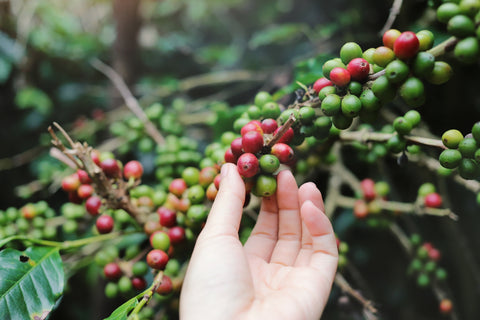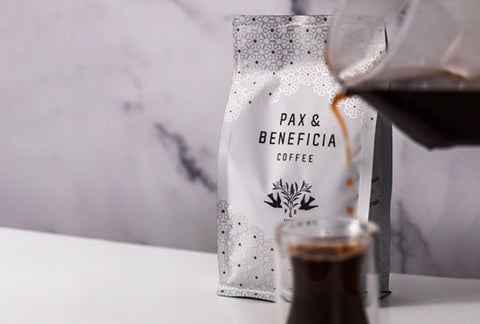At a quick glance, some may say that all brewed coffee has the same dark brown color. When you begin to compare different types of coffee, however, you’ll surely notice that there’s often a slight difference in color, whether it has a red tint, a light brown shade, or an intense dark brown appearance. The different colors of coffee that you see are no coincidence; they’re the result of different types of beans, their level of roast, and how they’re prepared. Let’s take a look at each of the factors that may affect the color of your next cup of coffee.
Why Are There Different Shades of Coffee Color?
The Type of Bean

Many coffee cherries start green and then change colors as they mature. Depending on the variety of the plant, the coffee cherry will typically turn red or yellow. The two most popular coffee beans are Arabica and Robusta, with the majority of people preferring the arabica coffee beans because of their smooth flavor. In general, Arabica coffee beans are light brown, while Robusta beans are darker, though the roasting process also affects the end color. We’ll discuss this more below.
In addition to the type of bean used, the harvesting process is also worth discussing. For quality coffee, the beans should be harvested when they’re ripe. To guarantee that red and yellow beans are harvested, they should be hand-picked to prevent green coffee cherries from being processed; this is one of the reasons why Colombian coffee is so good. However, not all coffee beans are picked the same way. When they’re harvested with machines, a mix of green, red, and yellow beans are gathered, affecting the quality and color of your coffee.
The Roasting Process
The roasting process has the most influence on the color of the bean, the flavor of the coffee, and, of course, the color of your brewed coffee. This process turns a regular coffee cherry into the brown bean that we are accustomed to. However, not all beans are roasted the same, and the variation can be seen in the diverse flavors found in different roasts. During the development stage of roasting, the beans caramelize and develop different flavors. The three roast levels are light, medium, and dark; the longer the bean is roasted, the darker it gets. Dark roasts have a dark brown color and a bitter, smokey flavor profile, whereas light roasts have light brown beans and acidic, fruity flavors.
At Pax & Beneficia, all of our beans are freshly roasted at our Grapevine café to ensure quality and flavor in every cup. You can choose the origin of your beans and we certainly take pride in our roasting.
The Preparation
How the coffee is brewed helps determine the characteristics of that particular roast. There’s a lot of variety in preparation, as there are many factors that can change its qualities: method, water temperature, grind size, strength, brew ratio, and contact time. All of these factors will change the end result, resulting in different colors of coffee. For example, if you like weak coffee, you may want to use lightly roasted beans, steep them for a short amount of time, and add extra water. For a stronger brew, you can use a dark roast, a longer brewing time, and less water. You’ll soon notice that there’s a clear difference in the color of your coffee depending on how you make it.
Discover a World of Flavors with Pax & Beneficia

At Pax & Beneficia, we love to discover new and exciting flavors. That’s why we’re bringing the flavors of the world to your doorstep. With our new coffee subscription, you can receive freshly ground coffee at the frequency of your choice. To learn more about our roasts, you can click on each individual roast to learn more about their flavor profile and where they come from. And when you’re sipping on your next cup of coffee, don’t forget to notice the color of your brewed coffee and consider what factors could have caused it.
To learn more about our roasts and how you can sign up for our monthly subscription, click here.



